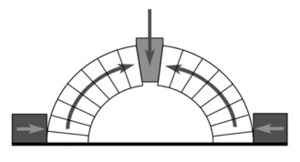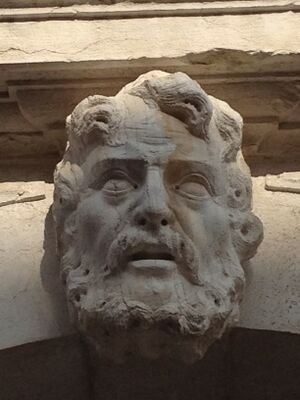Keystone: Difference between revisions
No edit summary |
|||
| Line 17: | Line 17: | ||
==References:== | ==References:== | ||
<references/> | <references/> | ||
[[Category:Keystones]] | |||
[[Category:Functional Art]] | |||
[[Category:Public Art]] | [[Category:Public Art]] | ||
[[Category: | [[Category:Material Culture]] | ||
Revision as of 12:04, 9 December 2012
A keystone is a wedged shape piece of stone that is placed at the top of the arch to lock, or hold all the other stones in place. The keystone allows the arch to bear weight but experiences the least amount of stress due to its position at the apex[1].

Function
A keystone is the central "voussoir" (a key or wedge stone) that holds and finishes an arch. It is the last stone to be placed, thus keys the whole arch together, making it strong and increasing its capability to support weight. As the visual center of an arch, a keystone is an integral element in the aesthetic design of a structure and connects the arch with the horizontal moldings that run above it[2].

Types
A keystone may project horizontally beyond the rest of the arch, and be accentuated with decoration, known as Decorative Keystones. In Venice, Decorative Keystones are found on bridges, windows, doorways, and other archways through out all Sestieri and they are decorated with heads, masques, lions, or Coats of Arms[3].